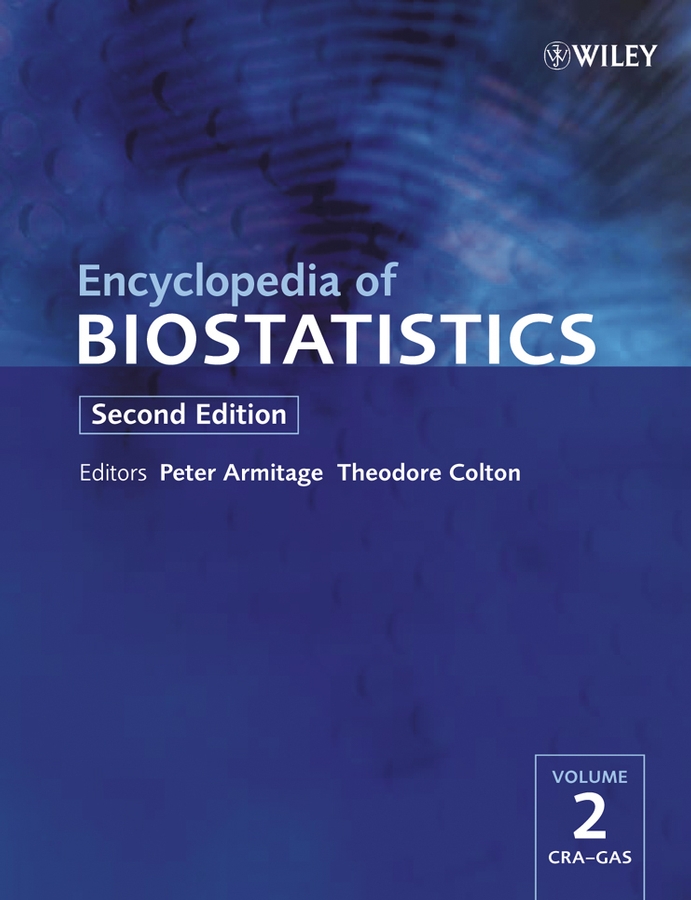Chi-Square, Partition of
Shelby J. Haberman
Center for Statistical Theory and Practice Education Testing Service, Princeton, NJ, USA
Search for more papers by this authorShelby J. Haberman
Center for Statistical Theory and Practice Education Testing Service, Princeton, NJ, USA
Search for more papers by this authorAbstract
A chi-square statistic suitable for testing a primary hypothesis can be partitioned into components such that each component gives a test for a corresponding secondary hypothesis. Some partitionings are exact and some are approximate. The theory is based on the Fisher–Cochran theorem about decomposing quadratic functions of normal variables. The history of this technique is surveyed. Applications are described for contingency tables, with the main focus on the two-way table and likelihood-ratio statistics. Brief mention is also made of partitioning into non-chi-square components, such as a decomposition that forms the basis of correspondence analysis.
References
- 1 Cochran, W. G. (1934). The distribution of quadratic forms in a normal system, with applications to the analysis of covariance, Proceedings of the Cambridge Philosophical Society 30, 178–191.
- 2 Cochran, W. G. (1952). The χ2 test of goodness of fit, Annals of Mathematical Statistics 23, 315–345.
- 3 Cochran, W. G. (1954). Some methods for strengthening the common χ2 tests, Biometrics 10, 417–451.
- 4 Fisher, R. A. (1925). Statistical Methods for Research Workers, 1st Ed. Oliver & Boyd, Edinburgh.
- 5 Gabriel, K. R. (1966). Simultaneous test procedures for multiple comparisons on categorical data, Journal of the American Statistical Association 61, 1081–1096.
- 6 Gilula, Z. (1985). On the analysis of heterogeneity among populations, Journal of the Royal Statistical Society, Series B 47, 15–23.
- 7 Gilula, Z. & Haberman, S. J. (1986). Canonical analysis of contingency tables by maximum likelihood, Journal of the American Statistical Association 81, 780–788.
- 8 Gilula, Z. & Haberman, S. J. (1988). The analysis of multiway contingency tables by restricted canonical and restricted association models, Journal of the American Statistical Association 83, 760–771.
- 9 Gilula, Z. & Krieger, A. M. (1983). The collapsibility and monotonicity of Pearson's chi-square for collapsed contingency tables with applications, Journal of the American Statistical Association 78, 176–180.
- 10 Gilula, Z. & Krieger, A. M. (1989). Collapsed contingency tables and the chi-square reduction principle, Journal of the Royal Statistical Society, Series B 51, 425–434.
- 11 Goodman, L. A. (1968). The analysis of cross-classified data: independence, quasi-independence, and interaction in contingency tables with or without missing entries, Journal of the American Statistical Association 63, 1091–1131.
- 12 Goodman, L. A. (1969). On partitioning χ2 and detecting partial association in three-way contingency tables, Journal of the Royal Statistical Society, Series B 31, 486–498.
- 13 Goodman, L. A. (1970). The multivariate analysis of qualitative data: interactions among multiple classifications, Journal of the American Statistical Association 65, 226–256.
- 14 Goodman, L. A. (1971). Partitioning of chi-square, analysis of marginal contingency tables, and estimation of expected frequencies in multidimensional contingency tables, Journal of the American Statistical Association 66, 339–344.
- 15 Goodman, L. A. (1981). Association models and canonical correlation in the analysis of cross-classifications having ordered categories, Journal of the American Statistical Association 76, 320–334.
- 16 Goodman, L. A. (1985). The analysis of cross-classified data having ordered and/or unordered categories: Association models, correlation models, and asymmetry models for contingency tables with or without missing entries, Annals of Statistics 13, 10–69.
- 17 Greenacre, M. J. (1984). Theory and Application of Correspondence Analysis. Academic Press, New York.
- 18 Haberman, S. J. (1974). The Analysis of Frequency Data. University of Chicago Press, Chicago.
- 19 Haberman, S. J. (1981). Tests for independence in two-way contingency tables based on canonical correlation and on linear by linear interaction, Annals of Statistics 9, 1178–1186.
- 20
Haldane, J. B. S.
(1939).
Note on the preceding analysis of Mendelian segregations,
Biometrika
31,
67–71.
10.1093/biomet/31.1-2.67 Google Scholar
- 21 Hirschfeld, H. O. (1935). A connection between correlation and contingency, Proceedings of the Cambridge Philosophical Society 31, 520–524.
- 22 Iverson, G. R. (1979). Decomposing chi-square: a forgotten technique, Sociological Methods and Research 8, 143–157.
- 23 Kastenbaum, M. A. (1960). A note on the additive partitioning of chi-square in contingency tables, Biometrics 16, 416–422.
- 24 Kimball, A. W. (1954). Short-cut formulas for the exact partition of χ2 in contingency tables, Biometrics 10, 452–458.
- 25 Kullback, S. (1959). Information Theory and Statistics. Wiley, New York.
- 26 Lancaster, H. O. (1949). The derivation and partition of χ2 in certain discrete distributions, Biometrika 36, 117–129.
- 27 Lancaster, H. O. (1951). Complex contingency tables treated by the partition of χ2, Journal of the Royal Statistical Society, Series B 13, 242–249.
- 28 Pearson, K. (1906). On a coefficient of class heterogeneity or divergence, Biometrika 5, 198–203.
- 29
Plackett, R. L.
(1962).
A note on interactions in contingency tables,
Journal of the Royal Statistical Society, Series B
24,
162–166.
10.1111/j.2517-6161.1962.tb00449.x Google Scholar
- 30
Rao, C. R.
(1973).
Linear Statistical Inference and Its Applications,
2nd Ed.
Wiley,
New York.
10.1002/9780470316436 Google Scholar
- 31 Williams, E. J. (1952). Use of scores for the analysis of association in contingency tables, Biometrika 39, 274–289.



